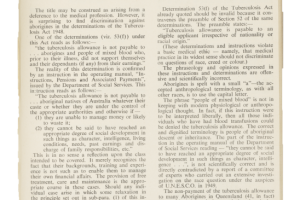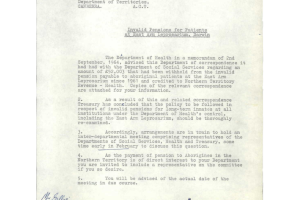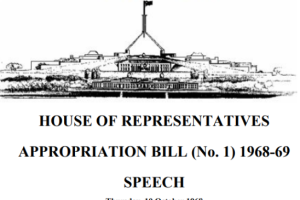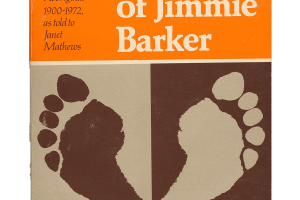
Artefacts about Health & Disability
After discovering that the departments of Health and Social Services were discriminatory in how they delivered Tuberculosis Allowance, activists successfully campaigned to change government instructions.
Aboriginal leprosy patients in the Northern Territory received only a fraction of their pension payments in the 1960s, while other patients got their benefits in full. Government officials disagreed about how to spend the withheld payments and the money went unaccounted for.
Due to a lack of DSS's presence in Western Australia, the state Department of Native Welfare published a pamphlet about payments Aboriginal people could get, reiterating earlier advice to apply through state-based officers.
Member of Parliament, Frederick Collard, pointed out the issues Aboriginal people in Western Australia faced in accessing government services, calling for a ‘fairer deal’.
In the absence of government help, Aboriginal people often relied on their communities for support. Shirley Smith told her story of becoming an unofficial welfare worker while challenging stereotypes about those who got government payments.
Social services impacted people in different ways. This excerpt from Jimmie Barker’s autobiography details his experience of having to stop work and beginning to get the pension.
In a special edition of Aboriginal Quarterly, the government promoted help for Aboriginal people with disability and featured Aboriginal voices in articles for the International Year of Disabled Persons.
DSS made a video to inform Torres Strait Islander people about the payments they could get and how to apply. It was recorded in 4 languages.







